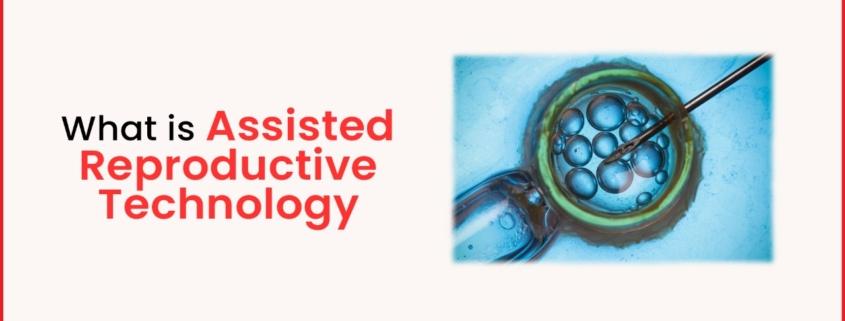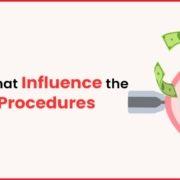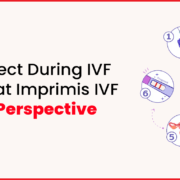What is Assisted Reproductive Technology
Assisted Reproductive Technology (ART) tells about a group of medical procedures that involve the manipulation of eggs, sperm, and/or embryos outside of the body to help individuals and couples conceive a child. The primary goal of ART is to increase the chances of successful pregnancy for those struggling with infertility. The success rates of ART vary depending on several factors, including the age of the female partner, the cause of infertility, and the type of ART used. If we take a look at the Centers for Disease Control and Prevention (CDC), the overall live birth rate for ART cycles is approximately 24%. However, this rate varies widely depending on the age of the female partner.
The Success Rates of Assisted Reproductive Technology (ART)
For women under 35, the live birth rate is approximately 32%, while for women aged 41-42, the live birth rate is less than 5%. While ART has revolutionized the field of infertility treatment, it is not without its risks and ethical considerations. Multiple pregnancies, which come at the time when more than one embryo is transferred, can lead to preterm labour, low birth weight, and other complications. Ectopic pregnancies, which occur when an embryo implants outside of the uterus, can be life-threatening if left untreated. Ohss is a type of condition in which the whole ovaries become swollen and a little painful due to the hormones used to stimulate egg production. Let’s check out some more information related to this.
Types of Assisted Reproductive Technology:
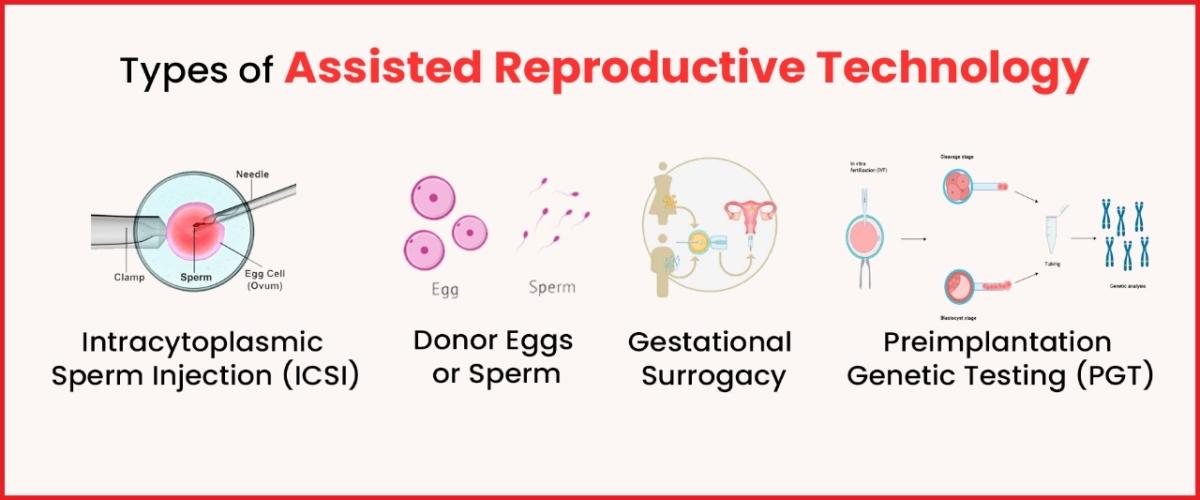
There are several different types of ART, each with its own unique set of procedures and advantages. These include:
Intracytoplasmic Sperm Injection (ICSI)
This technique involves the injection of a single sperm directly into an egg using a glass-formed needle carefully. ICSI is often used when there is a low sperm count or poor sperm quality, as it can increase the chances of successful fertilization.
Donor Eggs or Sperm
When a woman is unable to produce viable eggs or a man is unable to produce viable sperm, donor eggs or sperm can be used. Donor eggs are fertilized with the male partner’s sperm, and the final set of embryos is transferred to the woman’s uterus. Donor sperm is used to fertilize the female partner’s eggs, which are then transferred to her uterus.
Gestational Surrogacy
In gestational surrogacy, a woman carries a child for another couple. The eggs and sperm are usually from the intended parents, but in some cases, donor eggs or sperm may be used. The embryo is transferred to the surrogate’s uterus, and she carries the child to term.
Preimplantation Genetic Testing (PGT)
PGT involves the genetic testing of embryos before implantation. This can help in finding the genetic disorder forms or chromosomal abnormalities, allowing couples to select the healthiest embryos for transfer.
Process of Assisted Reproductive Technology:
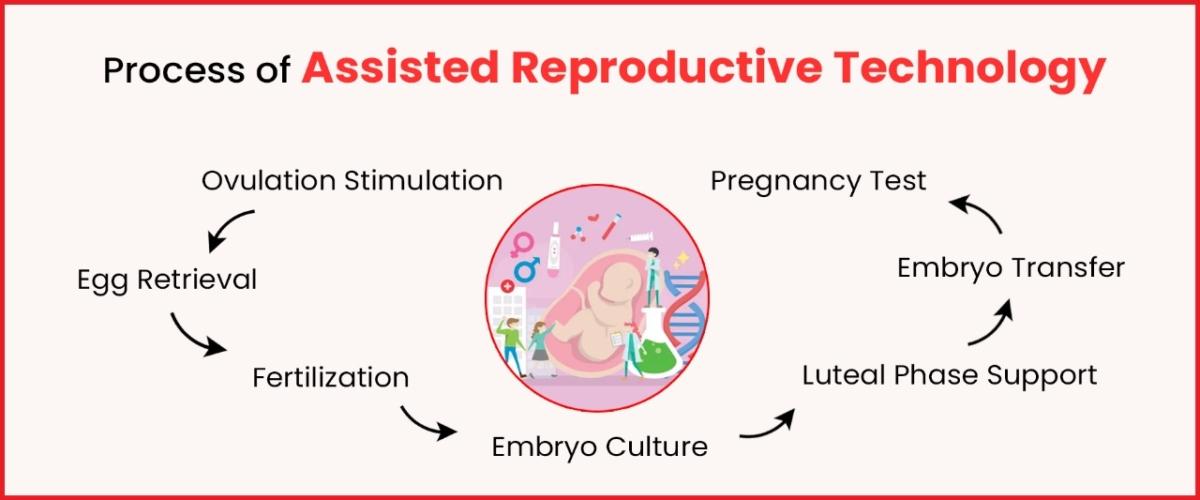
The process of Assisted Reproductive Technology (ART) involves several stages, and the specific steps can vary depending on the chosen ART procedure. There is an overview of the common steps involved in In Vitro Fertilization (IVF), one of the most widely used ART techniques:
Ovulation Stimulation:
The first thing is stimulating the main ovaries to produce multiple eggs for another process. This is typically achieved through the administration of fertility medications, such as gonadotropins and/or GnRH agonists or antagonists. Regular monitoring via ultrasounds and hormone level assessments helps track follicle development.
Egg Retrieval:
Once the follicles containing mature eggs are deemed ready, a very minor surgical way popular as egg retrieval or follicular aspiration is performed. A thin needle is inserted through the vaginal wall into the ovaries, and the fluid from the follicles containing the eggs is aspirated.
Fertilization:
The retrieved eggs are then combined with sperm in the laboratory for fertilization. Traditional insemination or Intracytoplasmic Sperm Injection (ICSI) may be used, depending on the specific circumstances. ICSI involves injecting a single sperm directly into an egg to facilitate fertilization.
Embryo Culture:
After fertilization, the embryos are cultured in a controlled environment for a few days. During this time, they undergo cell division and development. The embryologist monitors their progress and selects the healthiest embryos for transfer.
Embryo Transfer:
One or more selected embryos are then transferred into the woman’s uterus. This is typically a relatively simple, outpatient procedure and is often guided by ultrasound. The number of embryos transferred depends on factors such as age, medical history, and the specific circumstances of the individuals involved.
Luteal Phase Support:
To support the implantation of embryos, hormonal medications such as progesterone are often prescribed during the luteal phase of the menstrual cycle. This helps create a more favourable environment for embryo implantation.
Pregnancy Test:
Approximately 10 to 14 days after the embryo transfer, a blood test is conducted to determine if the woman is pregnant. If successful, ongoing prenatal care will commence.
It’s important to note that the above steps provide a general outline of the IVF process. Other ART procedures, such as intracytoplasmic sperm injection (ICSI), preimplantation genetic testing (PGT), and the use of donor eggs or sperm, have variations in their respective processes.
The choice of ART procedure and the specific steps involved depend on the individual or couple’s fertility issues and the recommendations of their fertility specialist. Regular communication with the healthcare team is crucial throughout the process to ensure personalized care and support.
Advantages of Assisted Reproductive Technology:
Assisted Reproductive Technology (ART) offers several advantages for individuals and couples facing fertility challenges. Here are some key benefits:
Overcoming Infertility:
The primary advantage of ART is its ability to help individuals and couples overcome infertility. ART procedures, such as In Vitro Fertilization (IVF), provide options for conception when natural methods are not successful due to various factors, including tubal blockages, male factor infertility, or unexplained fertility issues.
Increased Pregnancy Success Rates:
ART has contributed to improved pregnancy success rates, especially in cases where traditional fertility treatments may have been less effective. Advances in technology, laboratory techniques, and medical expertise have enhanced the chances of successful conception through ART procedures.
Treatment of Male Infertility:
ART techniques like Intracytoplasmic Sperm Injection (ICSI) are specifically designed to address male infertility issues. ICSI involves the direct injection of a single sperm into an egg, overcoming certain male reproductive challenges and increasing the likelihood of successful fertilization.
Preimplantation Genetic Testing (PGT):
ART allows for the screening of embryos for genetic abnormalities before implantation. PGT can help identify embryos with chromosomal abnormalities, reducing the risk of genetic disorders and increasing the chances of a healthy pregnancy.
Treatment Flexibility:
ART offers a range of treatment options, allowing healthcare professionals to tailor approaches based on individual needs. Whether it involves IVF, ICSI, or other techniques, the flexibility of ART enables personalized treatment plans.
Addressing Ovulatory Disorders:
For women with ovulatory disorders or irregular menstrual cycles, ART procedures can help stimulate and control ovulation, enhancing the chances of successful fertilization and implantation.
Options for Same-Sex Couples and Single Individuals:
ART provides alternative pathways to parenthood for same-sex couples and single individuals who may not have the biological capacity for conception through traditional means. Techniques such as donor insemination and surrogacy offer inclusive reproductive options.
Preserving Fertility:
Cryopreservation techniques allow the freezing of eggs, sperm, or embryos for future use. This is beneficial for individuals facing medical treatments that may impact fertility, such as chemotherapy, or for those who wish to delay childbearing for personal or career reasons.
Improving Treatment Outcomes with Research and Innovation:
Ongoing research and advancements in ART contribute to continual improvements in treatment outcomes. Innovations in laboratory technologies, medications, and treatment protocols contribute to higher success rates and safer procedures.
Disadvantages of Assisted Reproductive Technology:
While Assisted Reproductive Technology (ART) has provided significant advancements in helping individuals and couples overcome fertility challenges, it also comes with certain disadvantages. Here are some potential drawbacks associated with ART:
Financial Cost:
ART procedures, particularly In Vitro Fertilization (IVF), can be expensive. Costs include medications, fertility clinic fees, and additional procedures. Many individuals and couples may find it challenging to afford multiple cycles of treatment, especially if insurance coverage is limited.
Emotional and Psychological Stress:
The emotional toll of ART can be substantial. The process involves numerous medical appointments, hormonal treatments, and the uncertainty of treatment outcomes. Frequent disappointments or failed cycles can lead to emotional distress, anxiety, and depression for individuals and couples undergoing ART.
Not Guaranteed Success:
Despite advancements in technology, ART does not guarantee pregnancy success. Success rates vary depending on factors such as age, the cause of infertility, and overall health. Multiple treatment cycles may be required before achieving a successful pregnancy.
Multiple Pregnancies and Birth Risks:
ART procedures, especially when transferring multiple embryos to increase the chances of success, can lead to higher rates of multiple pregnancies (e.g., twins, triplets). Multiple pregnancies pose increased health risks for both the mother and the babies, including premature birth and low birth weight.
Ovarian Hyperstimulation Syndrome (OHSS):
Ovarian stimulation medications used in ART can sometimes lead to Ovarian Hyperstimulation Syndrome, a condition characterized by enlarged ovaries and fluid accumulation in the abdomen. Severe cases may require hospitalization.
Birth Defects and Developmental Issues:
Some studies suggest a slightly increased risk of certain birth defects and developmental issues in children conceived through ART. It is important to note that the absolute risk remains relatively low, and ongoing research is exploring this association.
Egg and Sperm Quality Concerns:
The use of donor eggs or sperm may raise concerns about the quality and origin of genetic material. Additionally, as individuals age, the quality of their eggs and sperm may decline, affecting the success rates of ART procedures.
Ethical Considerations:
Ethical concerns can arise in ART, particularly with practices like egg donation, surrogacy, and preimplantation genetic testing (PGT). Questions about consent, ownership of genetic material, and the commodification of reproductive services may be subjects of ethical debate.
Long-Term Health Impacts:
Limited long-term data is available on the health outcomes of individuals conceived through ART. Research is ongoing to understand any potential long-term health impacts on children born through these technologies.
Conclusion
Assisted Reproductive Technology has revolutionized the field of infertility treatment, allowing many individuals and couples to conceive who would otherwise be unable to do so. However, ART also carries several risks and ethical considerations that must be carefully considered. As the use of ART continues to grow, we must continue to explore and address these issues to ensure that this technology is used responsibly and ethically.

